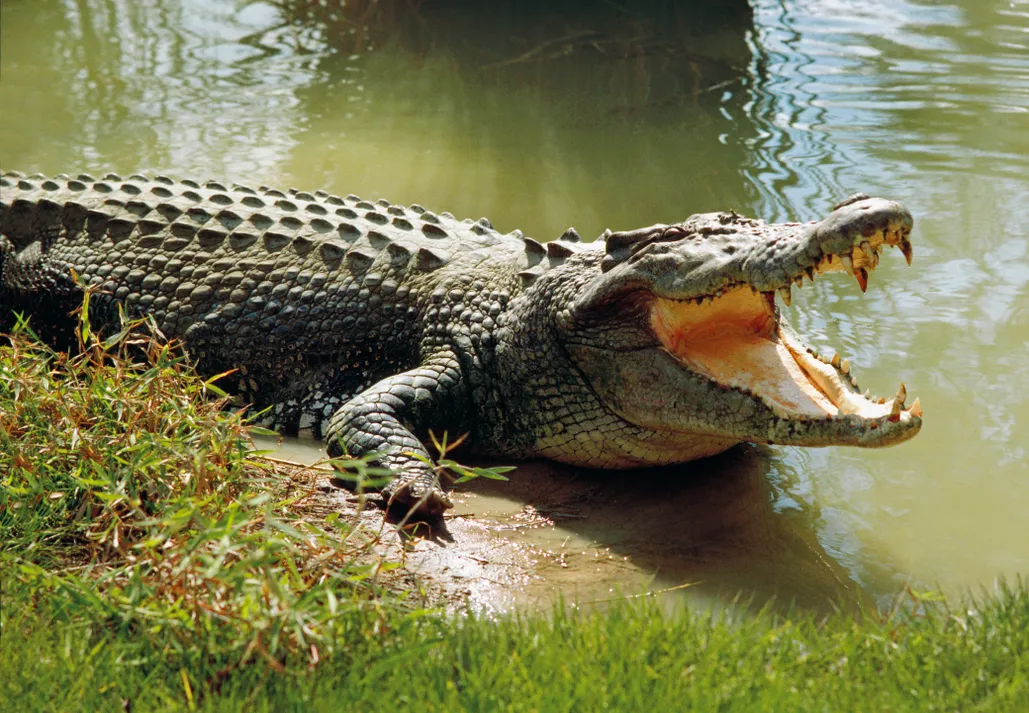Understanding Saltwater Crocodiles: A Parent’s Guide to These Majestic Creatures

Welcome to our fascinating guide, dear parents and guardians! If you’re eager to teach your little explorers about the majestic saltwater crocodiles, you’re in the right place. As curious as our young ones can be, it’s important to arm ourselves with knowledge, keeping safety and education at the forefront. Let’s embark on a journey to discover more about these ancient reptiles!
What are Saltwater Crocodiles?
Saltwater crocodiles, scientifically known as Crocodylus porosus, are the largest living reptiles on Earth. They are renowned for their impressive size, with males reaching lengths of up to 23 feet and weighing over 2,200 pounds. Ladies, on the other hand, are generally smaller, showcasing the natural wonder of these incredible creatures.
Habitat and Distribution
These crocodiles are not ones to shy away from varied environments. They make their homes in diverse ecosystems, stretching from the brackish waters of estuaries and mangroves to freshwater rivers and even the open ocean. These reptiles are predominantly found in the South East Asia and the northern regions of Australia. Understanding the habitat is crucial, especially when planning family trips to these areas. Knowledge is power – and safety!
Diet and Hunting Behavior
The diet of a saltwater crocodile is as vast as its habitat. Juveniles mostly snack on insects, amphibians, and small fish, while adults can handle prey as large as monkeys, wild boar, and even sharks. Their hunting strategy is one of patience and power, often waiting motionless in the water before launching an explosive attack.
Crocodile Safety for Families
When exploring regions inhabited by saltwater crocodiles, safety must be your top priority. Here are some tips to ensure that your adventures are memorable for all the right reasons:
- Stay Informed: Before visiting crocodile habitats, research the area and speak to local wildlife experts or park rangers.
- Observe Signage: Always heed warning signs. They are there for your protection, indicating areas where crocodiles may be present.
- Keep a Safe Distance: Maintain a safe distance from the water’s edge and never enter the water in areas where crocodiles live.
- Supervise Children: Always keep a watchful eye on your children and never let them play near crocodile-infested waters.
By following these guidelines, you can enjoy your natural surroundings with peace of mind, knowing you’re doing your part to prevent any unwanted encounters with these prehistoric giants.
Educational Opportunities
Beyond just safety, learning about saltwater crocodiles presents a wonderful chance to instill respect for nature in our children. Discussing their role in the ecosystem, their ancient lineage, and the conservation efforts to protect them can be both enlightening and inspiring.
Stay tuned, as there’s more to this guide! In our subsequent sections, we’ll dive deeper into the conservation efforts, how to responsibly observe these creatures in their natural habitat, and fun crocodile facts to share with your little ones.
Embarking on this educational adventure together not only brings families closer but also fosters a sense of responsibility towards the world we share with such awe-inspiring animals. So, let’s continue to keep an eager eye out, both for knowledge and for the preservation of our planet’s incredible biodiversity.

5 Things Parents Should Know in Preparing for Saltwater Crocodiles
1. Recognize Crocodile Behaviors
Understanding the behavior of saltwater crocodiles can greatly enhance your safety measures. These reptiles can be very territorial, especially during the mating season. They might exhibit different behaviors such as hissing or thrashing their tails if they feel threatened or are warning of their presence. Recognizing these cues is essential for staying safe.
2. Choose Activities Wisely
When in crocodile territory, selecting appropriate activities is key. Opt for guided tours where professionals can ensure your safety. Avoid kayaking, swimming, or fishing in areas known to be inhabited by saltwater crocodiles. Always prioritize activities that have been vetted for safety in crocodile habitats.
3. Clothing and Gear Precautions
Wearing bright and contrasting clothing may attract a crocodile’s attention due to their natural curiosity. Stick to neutral colors that blend with the environment. Also, ensure that you and your family have the right gear, such as binoculars for viewing from a distance and sturdy footwear for walking on soft, muddy ground.
4. Be Mindful of Your Environment
Be vigilant of the landscape around you. Crocodiles can remain very still and camouflaged for a long time, making them hard to spot. Avoid areas with low visibility such as tall grasses near the water’s edge. Also, refrain from lingering near the water during dusk or dawn when crocodiles are most active.
5. Educate Your Family
Education doesn’t just happen in the classroom—it’s an ongoing process that can save lives. Teach your family about crocodile safety, the importance of observing from a distance, and understanding why we must respect their habitat. Explain to children why they shouldn’t feed wild animals, as this can lead to dangerous associations with humans and food.
Arming yourself with the knowledge presented in this guide not only makes for a safer adventure but also enriches the experience of encountering one of nature’s most formidable predators. Always remember, these guidelines are not meant to instill fear, but to encourage respect and smart decisions while in the realm of the saltwater crocodile.
Please note, specific guidance and rules can vary depending on the country you are in. This guide offers general advice that should be broadened by local rules, regulations, and expert knowledge. When possible, always take advantage of the expertise of wildlife officials and local guides.
Exploring the habitats of saltwater crocodiles with a foundation of understanding and preparation allows us to responsibly admire these powerful animals from a safe distance. Embrace these moments to teach your children the importance of coexisting with wildlife and conserving the beautiful yet delicate ecosystems these creatures call home.
For more great fun click here. For more information see here
Disclaimer
The articles available via our website provide general information only and we strongly urge readers to exercise caution and conduct their own thorough research and fact-checking. The information presented should not be taken as absolute truth, and, to the maximum extent permitted by law, we will not be held liable for any inaccuracies or errors in the content. It is essential for individuals to independently verify and validate the information before making any decisions or taking any actions based on the articles.




